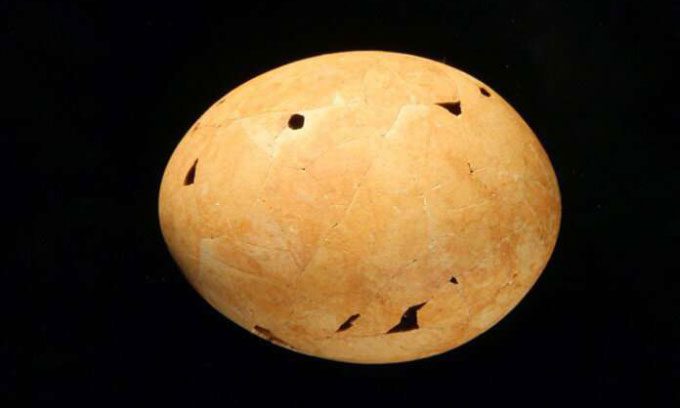Experts have identified the “owner” of the egg shells dated to approximately 50,000 years ago as the Genyornis, a large flightless bird.

The nearly intact Genyornis egg shell discovered in Australia. (Photo: Gifford H. Miller)
A long-standing scientific debate in Australia regarding the “mother” of these giant ancient eggs has been resolved in a new study by a team of scientists from the University of Copenhagen and international collaborators, reported SciTechDaily on July 9. The research was published in the journal Proceedings of the National Academy of Sciences.
The egg shells, approximately 50,000 years old, have been a topic of contention since they were first discovered by experts in 1981. They were unsure whether the shells belonged to the Genyornis (Genyornis newtoni) or the Progura bird.
Progura is a group of chicken-like birds belonging to the family Megapodiidae, weighing only 5 – 7 kg and characterized by large feet. Proponents of the Progura theory argue that the eggs — the size of cantaloupe melons — are still too small for a giant bird like the Genyornis.
The Genyornis, also known as the thunderbird, is a group of birds weighing up to 200 kg and standing 2 meters tall with large beaks. They belong to the genus Genyornis and are flightless. They coexisted with the first human settlers in Australia around 65,000 years ago.

Illustration of Genyornis being hunted by a giant lizard in Australia around 50,000 years ago. (Source: Peter Trusler)
“Our analysis of the protein sequences from the eggshells shows that they definitely cannot belong to the Progura bird or the Megapodiidae family,” explained Associate Professor Josefin Stiller from the Department of Biology at the University of Copenhagen, a member of the research team.
“These eggs can only belong to the genus Genyornis. Thus, we have concluded the long-standing debate about their origin,” added Professor Matthew Collins from the University of Copenhagen, a co-author of the study.
The team of experts analyzed proteins from the eggshells at two locations, Wallaroo and Woodpoint, in southern Australia. They broke down the proteins into smaller fragments and sequenced them precisely, then used artificial intelligence (AI) to study their structures. The protein sequences provided the research team with a collection of gene codes that could be compared with the genes of over 350 existing bird species.
Previous studies on the eggshell fragments indicated that they had been cooked and discarded in fire pits. The charred marks on the surface of the eggshells confirm this, demonstrating that the first inhabitants of Australia consumed the eggs. It is hypothesized that they harvested the eggs from nests, leading to the extinction of the Genyornis around 47,000 years ago.





















































